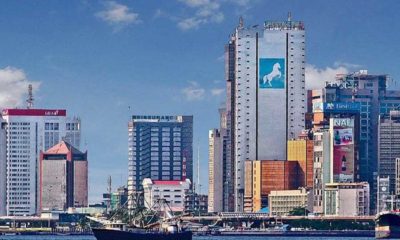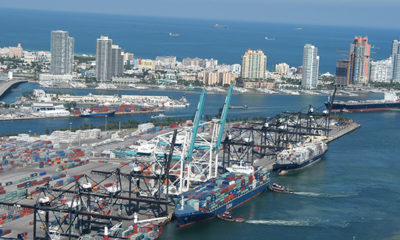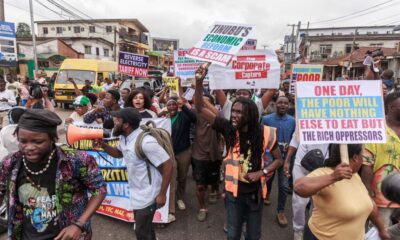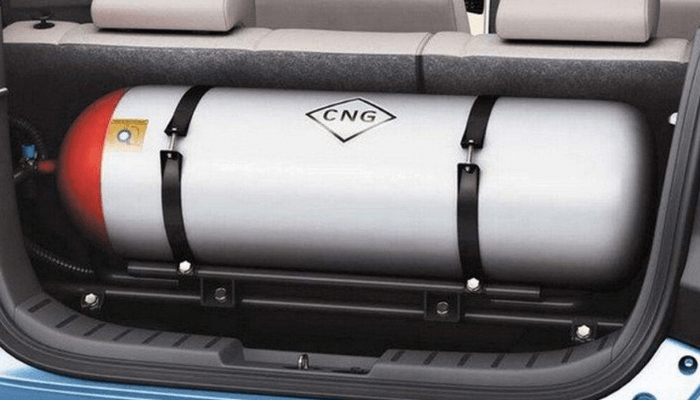- Energy-starved Nigeria Plans to Extend Gas Supply to Cote d’Ivoire
Nigeria will extend gas supplies from its Escravos region in the Niger Delta all the way to Cote d’Ivoire through the West African Gas Pipeline (WAGP), the Nigerian National Petroleum Corporation (NNPC) has disclosed.
NNPC disclosed the fresh plan to extend gas supplies to Cote d’Ivoire on the WAGP Wednesday when it hosted a delegation of the country at its corporate headquarters in Abuja.
The development comes against the background of revelations that Nigerian manufacturers spent N66.99 billion on generators and alternative energy sources to power their factories in the second half of last year due to the poor power supply from electricity companies.
Shortage of gas to fire Nigeria’s thermal power station had been identified as one of the keys factors militating against the generation of power in the country.
But a statement by its Group General Manager, Public Affairs, Mr. Ndu Ughamadu, said Nigeria’s gas export plan was disclosed to the delegation led by the Deputy Director, Production, Ministry of Petroleum of Cote d’Ivoire, Mr. Patrick Marshal.
NNPC’s disclosure of the trans-border gas supply to Ivory Coast also came at a time electricity generation to Nigeria’s national grid dropped to 2,901 megawatts (MW) from 2,910MW as of Monday. The power generation drop was linked to sundry issues, which include gas supply; line and frequency management constraints.
Yet, the corporation said gas supply would be extended from Ghana to Cote d’Ivoire in line with the federal government’s commitment to its West African energy integration policy.
The WAGP is a natural gas pipeline that supplies gas from Nigeria to Benin, Togo, and Ghana. It is reputed to be the first regional natural gas transmission system in sub-Saharan Africa and managed by WAGP Company Ltd (WAGPCo), which sells gas to its customers at competitive prices in comparison with other fuel alternatives.
WAGPCo is equally owned by Chevron West African Gas Pipeline Ltd (36.9 per cent); NNPC (24.9 per cent); Shell Overseas Holdings Limited (17.9 per cent); as well as Takoradi Power Company Limited (16.3 per cent); Societe Togolaise de Gaz (2 per cent); and Societe BenGaz S.A. (2 per cent).
The NNPC statement quoted its Group Managing Director, Dr. Maikanti Baru, who was represented at the meeting with the Cote d’Ivoire delegation by its Chief Operating Officer, Gas and Power, Mr. Saidu Mohammed, to have said that the extension of WAGP to Cote d’Ivoire would facilitate easy transmission of gas within the West African sub-region.
He noted that the visit would afford the NNPC and Cote d’Ivoire the opportunity to open a new vista for further bilateral discussions which would lead to the growth and development of both countries’ oil and gas sector.
Baru explained that Nigeria and indeed the NNPC have been into the business of oil and gas exploration and production for over 50 years, stressing that the interface would enable the NNPC to share its vast experiences in the sector with Cote d’Ivoire.
“Petroleum exploration and production date back to over 50 years in Nigeria and a lot of experiences in technology and personnel management have been acquired. We are ready to share our experiences with you so as to help you to avoid the mistakes we made in the past,” Baru said.
He expressed the readiness of the NNPC to develop the capacity of the delegation, adding that it was aware of the long history of refining in Cote d’Ivoire.
The statement equally said that Marshal, who led the Ivoiriens, intimated the corporation that they were at the NNPC to learn some of its best practices in personnel management; exploration; and production of oil and gas.
It noted that a technical session on the mode of operations of the NNPC in the petroleum sector was also held.
Meanwhile, data from the country’s power sector have indicated that between Monday and Tuesday of this week, power generation had fluctuated between 2,910MW and 2,901MW on account of poor gas supplies; line; and frequency management constraints.
The data, which came from the National Control Centre (NCC) Osogbo, explained that on July 31, 2017, just about 2,910MW was sent out to the grid, adding that the reported gas constraint was 983MW; line constraint was 424MW, and frequency management constraint due to distribution challenges was 2,036.4MW.
It noted that five plants: Omotosho I and II; Olorunsogo I; Alaoji NIPP; and Geregu NIPP were shut due to gas constraints while a unit in Egbin (ST5) could only generate 102MW due to circulating water pump problem; as well as Okpai which was limited to 305MW due to unavailability of one boiler and a fault on its generation turbine (GT11).
On August 1, 2017, the NCC data noted that average generation figure was 2,901MW, adding that 543MW could not be generated because of gas constraints.
The reported line constraint for the day was 302MW, while frequency management constraint was 1,778.3MW. Omotosho I and II, Olorunsogo I, Alaoji NIPP and Geregu NIPP were still down from gas constraints.
The report also noted that the power sector deferred incomes of N1, 259 billion and N1,653 billion respectively within both days.
Manufacturers Spent N66.99 billion on Generators, other Alternative Energy
In a related development, the Manufacturers Association of Nigeria (MAN) spent a whopping N66.99 billion on generators and other alternative energy sources in the second half of 2016 due to poor power supply, a review available has shown.
In the review, MAN noted that during the period under review, daily supply averaged eight hours and outage four times, hence, its expenditure on alternative energy source in the period increased to N66.99 billion from N29.48 billion expended in the corresponding period of 2015; thus indicating N37.51 billion increases over the period.
It also increased by N4.03 billion when compared with the N62.96 billion recorded in the preceding half. Expenditure on alternative energy sourcing in the sector increased to N129.95 billion in 2016 from N58.82 billion recorded in 2015; thereby indicating N71.13 billion increase over the period.
The increasing expenditure on alternative energy source and arbitrary escalations in Nigerian Electricity Regulatory Commission (NERC) tariff order were said to be responsible for the high cost of production in the sector with the share of energy standing at 36 per cent. “This trend also explains why the prices of made in Nigeria products are less competitive when compared with imported goods.”
On the cost of funds to manufacturers, it noted that limited availability of borrowable funds and the attendant high-interest rate were major challenges to manufacturing in the period under review.
The result of the survey conducted by MAN in the period shows that the average cost of borrowing from the commercial banks increased to 23.3 per cent from 21.9 per cent recorded in the corresponding half of 2015; thereby indicating 1.4 percentage point decline over the period. It also declined by 1.9 percentage point when compared with 21.4 per cent recorded in the preceding half. This high cost of borrowing was consistent across sectoral groups and industrial zones.
Meanwhile, the association recognised the fact that the macroeconomic terrain in 2016, especially in the first half was highly volatile for general economic activities, especially for the manufacturing sector to make meaningful headways.
“Deepened macroeconomic quagmires at this half of the year were the acute shortage of FX, high lending rate and exclusion of some vital manufacturing raw-materials from the official forex market. The situation was worsened by familiar challenges such as poor power supply, the high cost of electricity generation and declining household consumption due to the inflationary effect on real income.
“However, very credible evidence-based advocacy orchestrated by MAN in the course of the year produced desired results as manufacturers were given preferential FX allocation by the Central Bank of Nigeria (CBN) so as to sustain production”, it noted.
In May 2016, it acknowledged the fact that government responded with a 60 per cent preferential FX allocation to manufacturers for the importation of raw materials and machinery that are not locally available.
It said: “This directive was the turning point in the second half of 2016 as the preferential FX allocation was able to support the various investments already made locally for the development of raw-materials and resurged manufacturing production to a large extent.
“This, in fact, was responsible for the production momentum gained in the economy in the second half of the year. However, notwithstanding the leeway gained in the second half of the year, it is very important for the Government to continue to address the multifarious economic challenges facing the economy especially the manufacturing sector by taking cognizance of the following measures.”
Meanwhile, the capacity utilisation increased to 59.18 per cent in the second half of 2016 from 49.64 per cent recorded in the corresponding period of 2015; thereby indicating 9.54 percentage point increase over the period. It also increased by 14.88 percentage point when compared with the 44.3 per cent of the preceding half.
Capacity utilisation averaged 51.74 per cent in 2016 as against 50.17 per cent of 2015; thereby indicating 1.57 percentage point increase over the period. The increase in capacity utilisation in the second half of 2016 is attributable to the 60 per cent preferential FX allocation to the manufacturing sector for the importation of raw-materials and machinery that are not locally available. The guideline made FX more available to the sector or their imports needs.
The report added that analysis of capacity utilisation based on sectoral groups shows that capacity utilisation increased in the entire sectoral groups in the period under review. Capacity utilisation in Food, Beverage and Tobacco group increased to 60.3 per cent in the second half 2016 from 53.7 per cent recorded in the corresponding half of 2015; thereby indicating 6.6 percentage point increase of the period.
It also increased by 10.5 percentage point when compared with 49.8 per cent recorded in the preceding half.

 News3 weeks ago
News3 weeks ago
 Business3 weeks ago
Business3 weeks ago
 Technology3 weeks ago
Technology3 weeks ago
 Investment3 weeks ago
Investment3 weeks ago
 Banking Sector3 weeks ago
Banking Sector3 weeks ago
 Banking Sector3 weeks ago
Banking Sector3 weeks ago
 Appointments3 weeks ago
Appointments3 weeks ago
 Investment3 weeks ago
Investment3 weeks ago





























